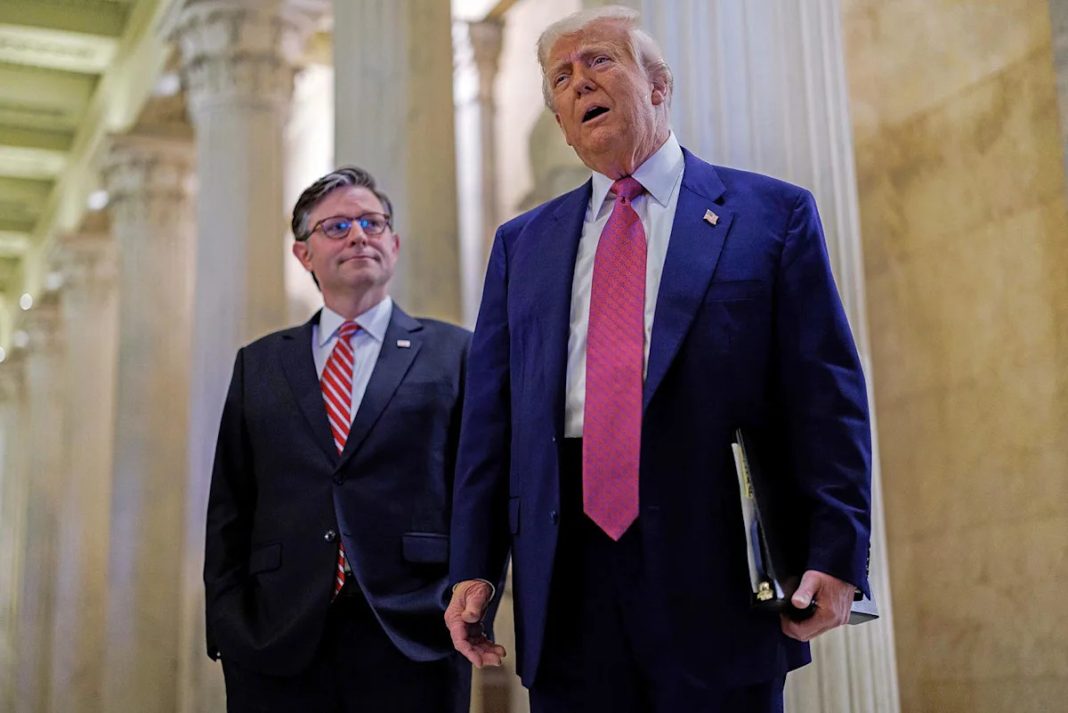The day before the government shutdown deadline, Donald Trump left little doubt that he was not serious about trying to avoid a crisis. On the contrary, four hours after a White House meeting with congressional leaders and roughly 28 hours before the deadline, the president thought it’d be a good idea to amplify an AI-generated video attacking Democrats — whose votes will be needed to resolve the standoff — that was widely panned as vulgar, racist and dishonest.
One day later, Trump, who likes to characterize himself as a world-class dealmaker and negotiator, could’ve spent time working on a possible solution. Instead, he promoted another AI-generated video attacking Democrats. The New York Times reported:
President Trump posted another AI-generated video on social media mocking Representative Hakeem Jeffries of New York, the Democratic House leader, again with a cartoon mustache and sombrero, this time with four images of Mr. Trump as a mariachi band. The original video was from a TV interview tonight, in which Mr. Jeffries denounced the video Trump posted yesterday as ‘bigotry.’ Republicans have been making false claims that Democrats are forcing a government shutdown because they want to give free healthcare to immigrants in the country illegally.
This was not the move of a responsible adult trying to prevent a breakdown. Rather, it’s what one might expect from an intemperate tween, more interested in trolling perceived enemies than responsible governance.
As the latest government shutdown gets underway and assorted partisans scramble to assign and avoid blame, the politics of this mess are a little tricky. On the one hand, it’s Democrats who are demanding concessions, which might suggest they’re likely to be held responsible.
On the other hand, it’s not nearly that simple. The concessions Democrats are demanding are popular — they’re fighting to make health care benefits affordable for American families — and they’re going up against a Republican Party that controls the House, the Senate and the White House.
What’s more, it’s GOP officials who’ve spent the last three decades shutting down the government — or at least threatening to do so on a very regular basis — and they’ve created a political brand that’s widely recognized by much of the public.
And the latest national polling shows Americans aren’t blaming Democrats for the shutdown (at least not yet), even as the party is trying to leverage the standoff for a sought-after policy goal.
As is often the case, it’s Trump who’s the wild card. He’s also the one making matters worse, not better, for his own party.
In theory, the president could try to take the high ground and characterize Democrats as the villains holding government funding “hostage.” In fact, that would be a sensible political strategy, which might actually work.
In practice, the president can’t seem to help himself. In addition to promoting offensive AI videos, during the run-up to the shutdown deadline, Trump acted erratically, agreeing to bipartisan talks, then reversing course, only then to reverse course again. He publicly urged his own party’s leaders not to negotiate with Democrats, while falsely claiming that Democratic votes wouldn’t be needed to keep the government open.
Now, as the shutdown begins, the president has said he’s prepared to take “irreversible” actions, including cutting unidentified “benefits,” all while suggesting he’ll be required to fire “a lot” of federal workers — a move that wouldn’t be necessary and might not even be legal.
With just hours remaining before the deadline, Trump boasted, “A lot of good can come down from shutdowns,” which indicated that he was looking forward to the mess, rather trying to avoid it.
As political scientist Jonathan Bernstein explained earlier this week, “the structural basics” of this shutdown appear to be favor Republican, “but it is possible that Trump can overcome that and convince people to blame him.”
This article was originally published on MSNBC.com

